Pyotr Ilyich Tchaikovsky (1840–1893) took the fairy-tale play by Alexander Ostrovsky as the basis for his incidental music production of The Snow Maiden.
The Snow Maiden emerges from the forest at exactly the wrong time: winter is fading, and spring is in the air. She wants to join humankind, most specifically Lel, a shepherd. His songs have charmed her, and she wants to be with him, but her frozen heart prevents them from connecting. Lel is inconstant and is always charmed away by other girls, but Mizgir is taken with the Maiden. The Tsar intervenes and offers a reward to anyone who melts the Snow Maiden’s heart, and both Lel and Mizgir are competitors.
The problem, of course, is that when the Snow Maiden’s heart is melted, she will melt as well. Mizgir does capture her heart, and she melts, but in her melting, she has brought the warmth of the sun for spring. The Tsar and his people rejoice at the return of the sun.
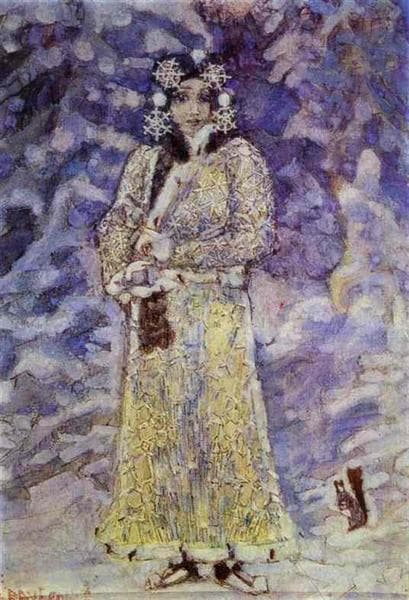
Mikhail Vrubel: The Snow Maiden, 1895 (Ryazan, Russia: Ryazan State Regional Museum of Fine Arts)
Pyotr Ilyich Tchaikovsky: The Snow Maiden, Op. 12 – Prologue: Introduction (Moscow Symphony Orchestra; Igor Golovschin, cond.)
Tchaikovsky wanted to develop his incidental music into a full opera, but Rimsky-Korsakov (1844-1908) beat him to it.
Now, King Frost and the Spring Fairy must protect their daughter, the Snow Maiden, from Yarilo, the sun god. They send to the human world for protection. She falls in love with Lel’s singing, but he falls in love with Kupava. The Snow Maiden spurns Mizgir’s attention until the Spring Fairy persuades her otherwise. Unfortunately, the Snow Maiden melts when a ray of Yarilo’s sunshine hits her. Mizgir drowns himself in sorrow while everyone else celebrates the coming of spring, calling Yarilo the ‘Light of the World’.
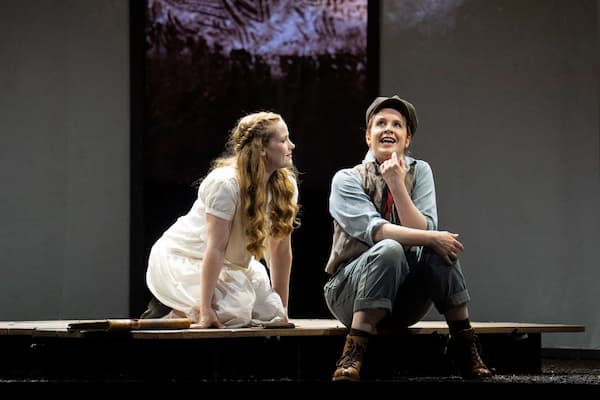
Ffion Edwards (Snow Maiden) and Kitty Whately (Lel), 2024 (Photo by Richard Hubert Smith) (English Touring Opera)
Nikolai Rimsky-Korsakov: The Snow Maiden – Act IV: Like the spring snow has she melted away (Belgrade National Opera Chorus; Belgrade National Opera Orchestra; Krešimir Baranovic, cond.)
While the Snow Maiden is a victim of love, the Snow Queen, on the other hand, is the focus of evil. The devil has a mirror that distorts everything, but he breaks it, and it spreads all over the world. When it gets into peoples’ hearts, they change their character. Kai and Gerta are neighbours and playmates. A sliver of the devil’s mirror gets into Kai’s heart, and he changes for the worst. He sees the Snow Queen, and she kidnaps him, attaching his sledge to her sleigh.
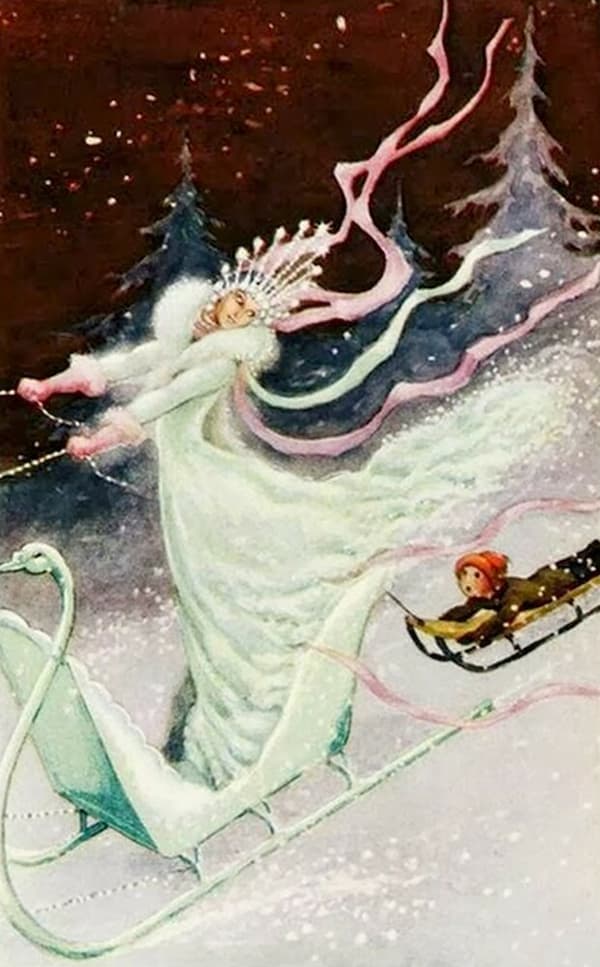
Rudolf Koiven: Kai and the Snow Queen, 1992
Gerda seeks Kai through the world eventually finding him at the Snow Queen’s palace. She steals him away from the Snow Queen when her tears melt the mirror shard in his heart. They return home, where it is now spring.
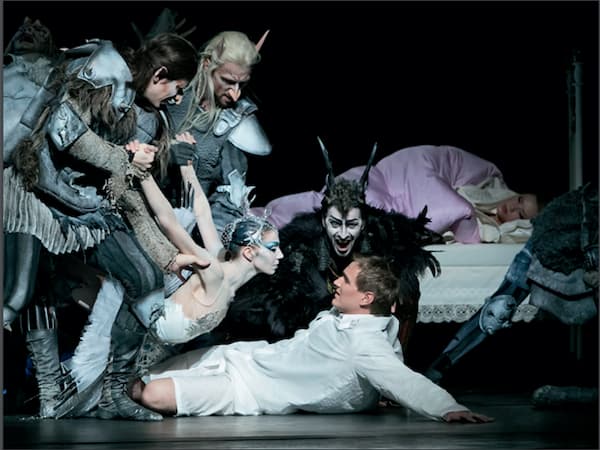
The Snow Queen, Kai, and Gerda, 2012 (Photo by Sakari Viika) (Finnish Ballet)
Tuomas Kantelinen: Lumikuningatar (The Snow Queen) – IX. Lumivalssi (Snow Waltz) (Finnish National Opera Orchestra; Tuomas Kantelinen, cond.)
The composer, Tuomas Kantelinen, created the work for the Finnish Ballet’s 90th anniversary in 2012, using the 1845 story by Hans Christian Andersen as its basis. The choreographer saw the work as appealing to both children and adults, who see different facets of the story (An adventure! Children in danger!) Kantelinen sets the story in 3 worlds: Finland (Helsinki), the world of the fairy-tale creatures in Lapland, and the wintery world of the Kalevala, which is where the Snow Queen and her minions live.
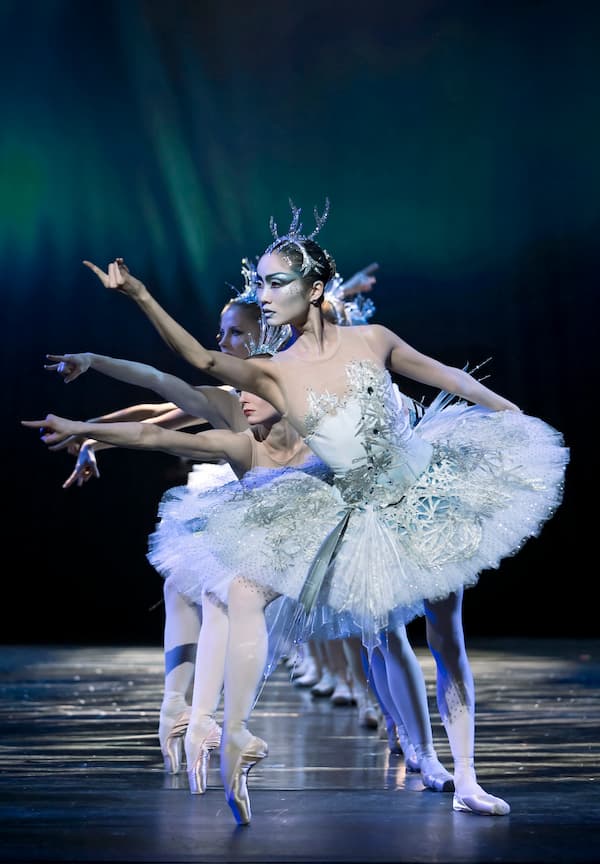
The Snow Queen’s Minions, 2012 (Photo by Saraki Vika) (Finnish Ballet)
American composer Kenji Bunch (b. 1973) was commissioned by Brian McWhorter for a ballet on The Snow Queen for the Eugene (OR) Ballet. He chose to emphasise the opposites of the two female protagonists: The Snow Queen’s cold and clinical world versus Gerda’s warmth and friendship with Kai.
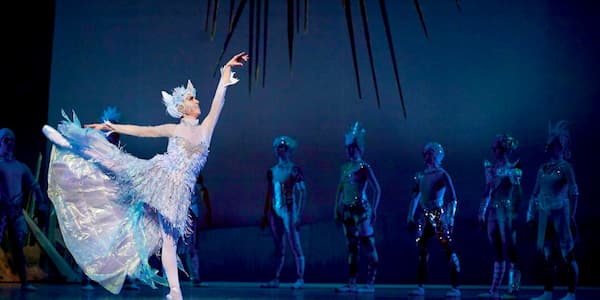
Danielle Tolmie as the Snow Queen, 2023 (photo by Ari Denison) (Eugene Ballet)
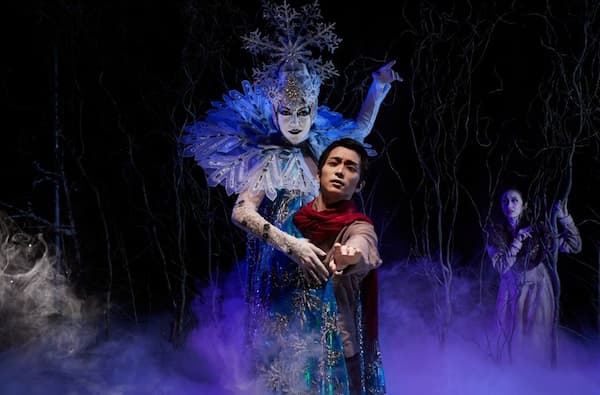
Danielle Tolmie (Snow Queen) and Hirofumi Kitazume (Kai) in The Snow Queen, 2023 (Photo by Jeremy Bronson) (Eugene Ballet)
Kenji Bunch: The Snow Queen – Act I: Kay’s Heart turns to Ice (Orchestra Next; Brian McWhorter, cond.)
And then, at the end,
Kenji Bunch: The Snow Queen – Act II: Gerda Thaws Kay’s Heart (Orchestra Next; Brian McWhorter, cond.)
Bunch’s dripping, melting ice is perfectly captured.
It’s clear that if you’re a snow creature, mixing with humans is not a good thing!
For more of the best in classical music, sign up for our E-Newsletter


